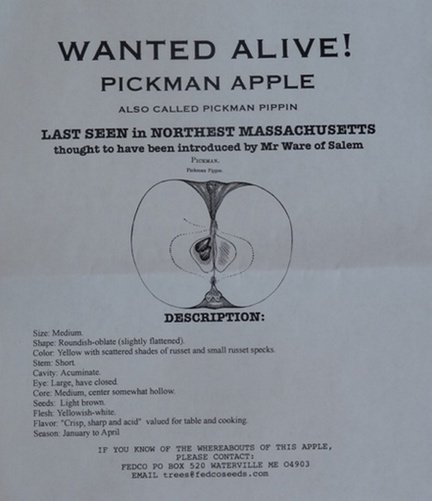Wondering how to track down a rare apple yourself? Here are some resources to help you get started:
Historical societies: Old photographs and land records can provide important clues about the existence and identity of apples in a particular town or on a specific property. These societies may also have orchard maps and Grange or fair premium lists that indicated exactly what types of fruit were grown and sold in the region.
Frederick Charles Bradford’s “The Apples of Maine: A Compilation of the History, Physical and Cultural Characteristics of All the Varieties of Apples Known to Have Been Grown in the State of Maine”: Bradford wrote his thesis in 1911 for his masters in botany from the University of Maine (originally called “Apple Varieties in Maine,” it was later published as the book “The Apples of Maine.”) It has extensive information about many lost varieties and the original location of the trees. Get it through the University of Maine.
Old newspapers: You’re in luck if their content has been digitized because microfilm is a slog. Newspapers often published fair or Grange premium lists, along with news items about local orchards.
USDA apple watercolors: These were painted mostly between 1894 and 1916. The paintings note the location of an apple – often tying it to a specific person who sent the apple to the government – as well as clear illustrations. Because apples may look slightly different in different regions, be sure to integrate other information into any search.
Maine Pomological Society annual reports: These discuss locations and people involved in cultivating apples in particular counties or towns.
National Archives and Records Administration: A particularly good source is Joseph Schwarz at joseph.schwarz@nara.gov. You can get copies of the records kept of correspondence between the federal government and farmers in Maine and elsewhere who submitted their apples to be identified or cataloged.
John Bunker: Find him this weekend at the Hayloft Tent at the Common Ground Country Fair in Unity.
Great Maine Apple Day: An annual event in Unity (this year on Oct. 15) with talks and workshops about Maine’s apples. You can taste many of the lost apple varieties that have been rediscovered in the last two decades.
Tree pruners: Their work entails locating and identifying old trees, which means they may help you track down a lead or even just point you in the direction of an odd variety they’ve discovered in the course of their work.
Send questions/comments to the editors.



Comments are no longer available on this story